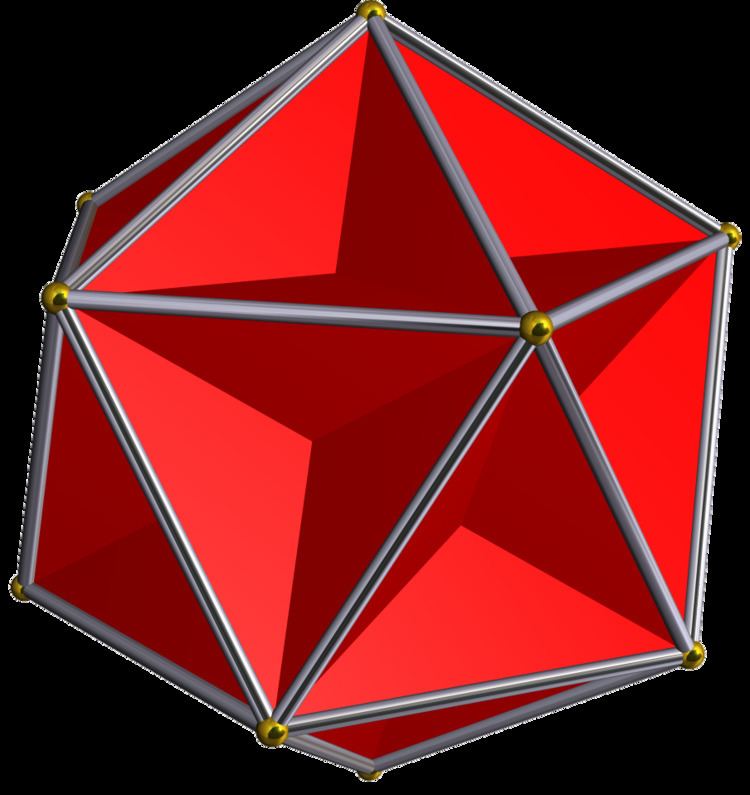 | ||
In geometry, the great dodecahedron is a Kepler–Poinsot polyhedron, with Schläfli symbol {5,5/2} and Coxeter–Dynkin diagram of . It is one of four nonconvex regular polyhedra. It is composed of 12 pentagonal faces (six pairs of parallel pentagons), with five pentagons meeting at each vertex, intersecting each other making a pentagrammic path.
Contents
The discovery of the great dodecahedron is sometimes credited to Louis Poinsot in 1810, though there is a drawing of something very similar to a great dodecahedron in the 1568 book Perspectiva Corporum Regularium by Wenzel Jamnitzer.
Related polyhedra
It shares the same edge arrangement as the convex regular icosahedron.
If the great dodecahedron is considered as a properly intersected surface geometry, it has the same topology as a triakis icosahedron with concave pyramids rather than convex ones.
A truncation process applied to the great dodecahedron produces a series of nonconvex uniform polyhedra. Truncating edges down to points produces the dodecadodecahedron as a rectified great dodecahedron. The process completes as a birectification, reducing the original faces down to points, and producing the small stellated dodecahedron.
